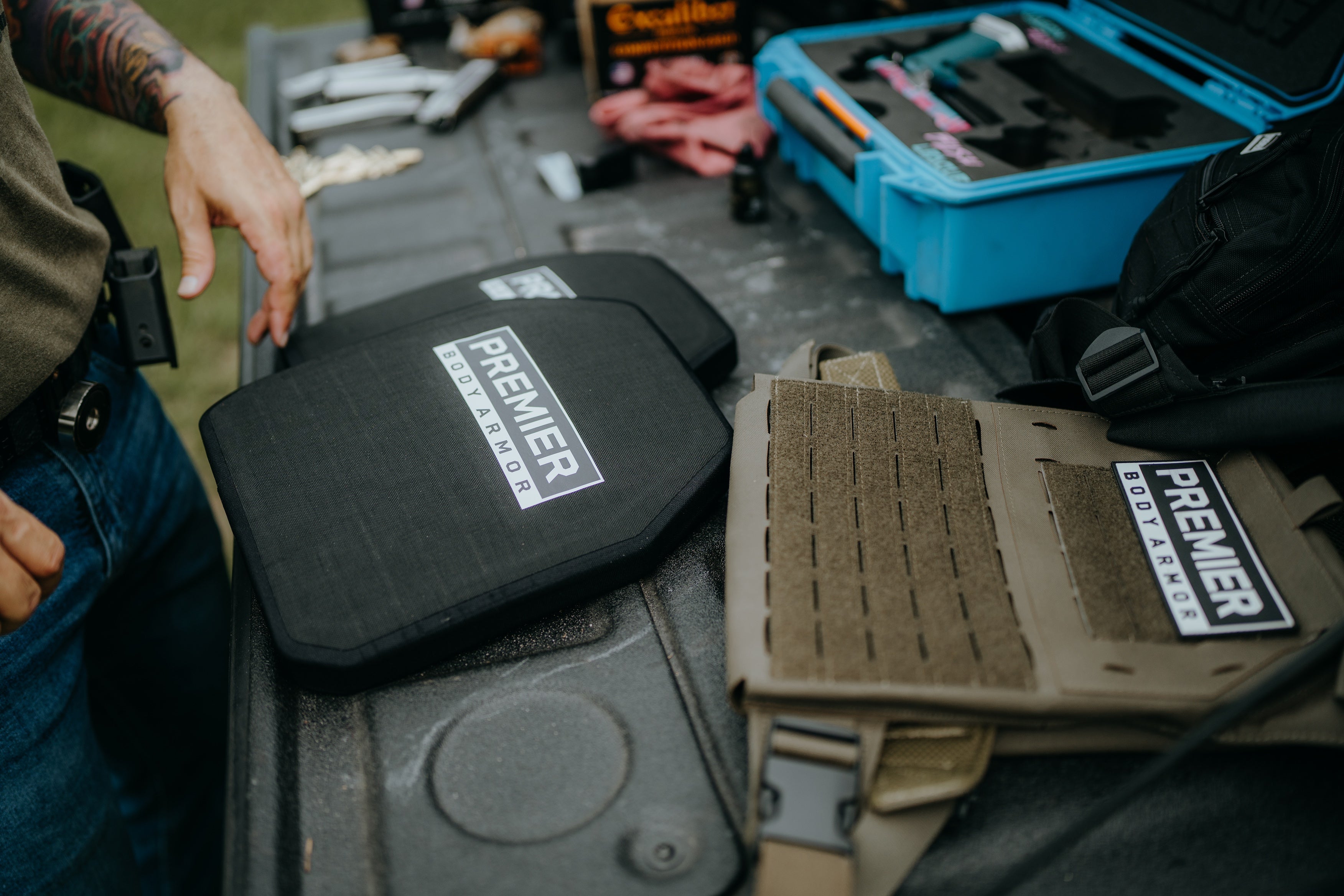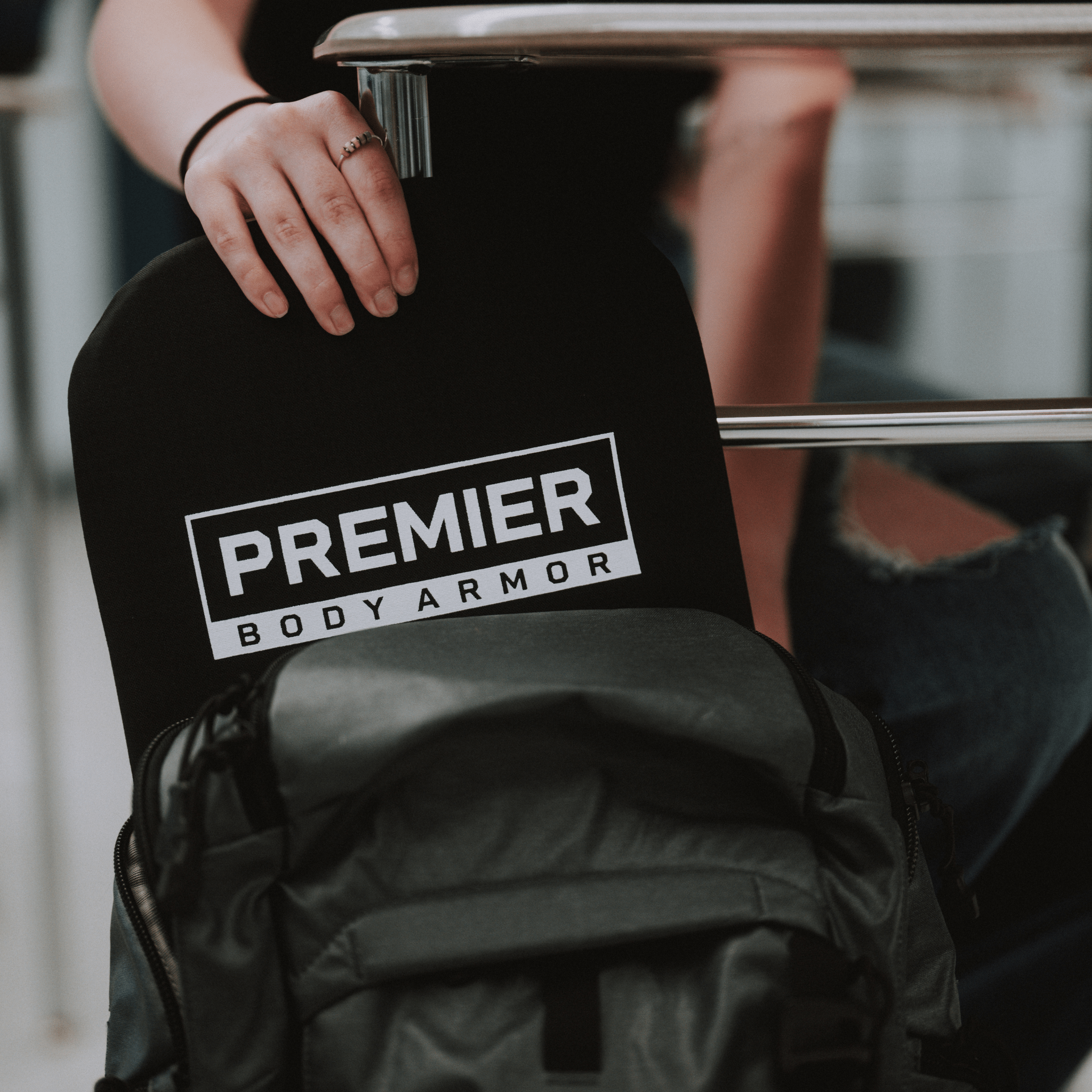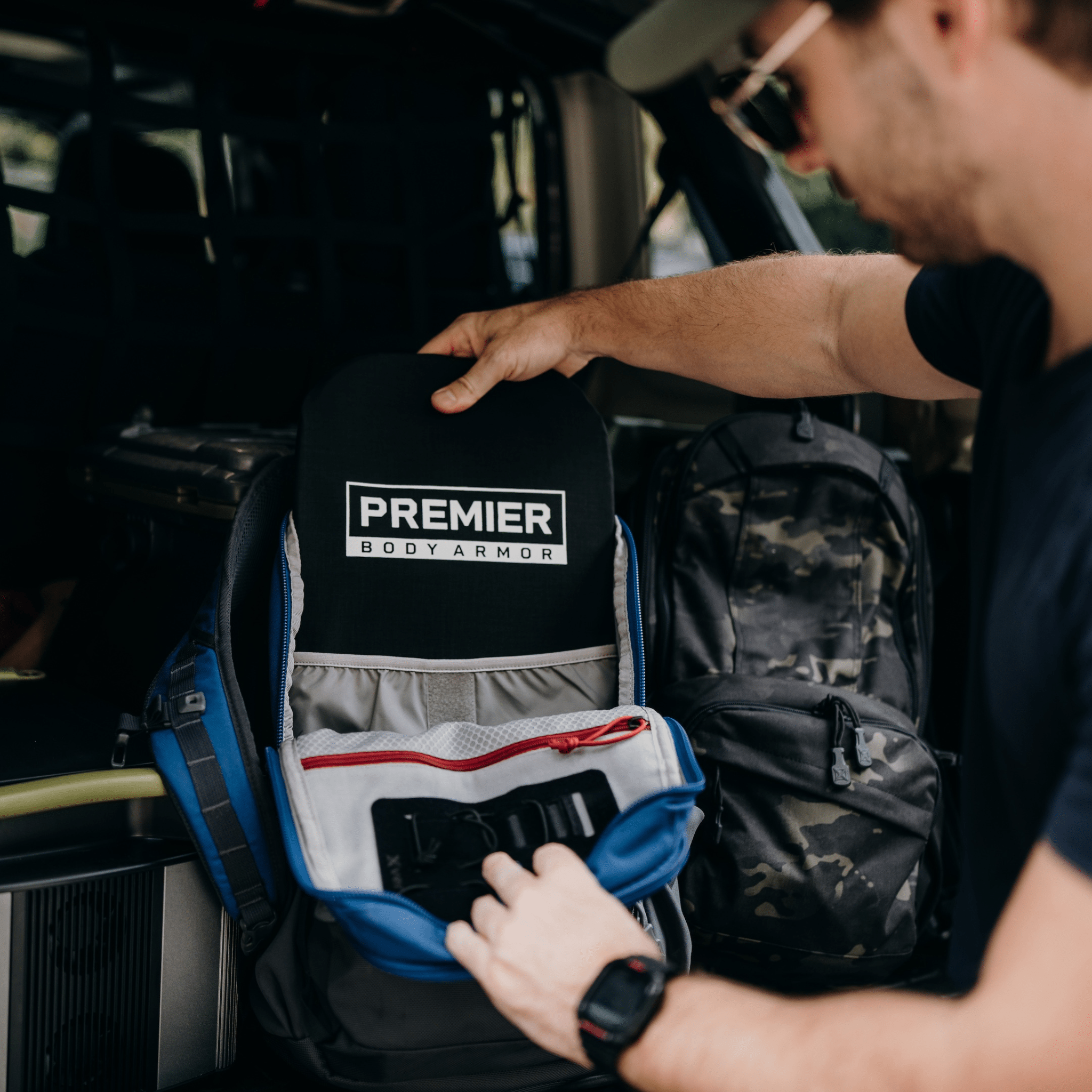Will Body Armor Stop A Knife: Stab Proof vs Bullet Proof
Will a bulletproof vest stop a knife?
While bulletproof vests are designed to protect against bullets, many wonder, can a knife go through a bulletproof vest? The short answer is, yes, but the long answer requires an awareness of a few important factors.
It is important to understand that the requirements for knife and ballistic protection vary. A high rating in one field does not ensure a corresponding high rating in the other. While all of Premier Body Armor’s products have a natural knife resistance, they are not specifically designed for protection against stab or slash attacks.
You can learn more about body armor ratings for ballistic threats in our article, and learn more about stab rating NIJ standards.
What is a spike rating?
Spike rating is a metric developed by the National Institute of Justice (NIJ) that measures the stab resistance of armor. A level 1 spike rating indicates that the armor will protect against attacks with a force of 17.7 foot-pounds or less. Level 2 protects against attacks of 24.3 foot-pounds or less, and level 3 protects against attacks up to 31.7 foot-pounds in strength. A foot-pound is the amount of energy required to move 1 pound a distance of 1 foot.
The NIJ also provides an “edged blade” resistance chart, that indicates body armor with a level 1 spike rating also protects against slash threats of the same intensity.

What to consider for body armor knife protection:
When looking for the right body armor for knife protection, you should look for armor that offers slash protection as well as stab resistance. This will provide protection against both types of attacks.
Furthermore, consider the material that the ballistic armor is made from. Kevlar and polyethylene are the two most common materials used to make armor to protect against knife attacks. Ceramic and steel can also provide some level of protection. These products will often carry a “stab resistant” or “slash proof” designation.
However, it's important to note that no body armor is completely stab proof. Even the most effective armor can be penetrated by a determined attacker. That being said, body armor can still provide a significant level of protection and can reduce the risk of serious injury or death in the event of a knife attack.
What types of body armor will also stop a knife?
Nowadays, most ballistic armor will provide some level of resistance against stab and slash risks, as modern manufacturing techniques and materials such as kevlar, polyethylene, ceramic and steel ensure armor that is durable enough to defend against both ballistic and knife threats.
Will a plate carrier stop a knife? Yes, a fully loaded plate carrier will provide some protection against a knife threat, as long as the strike lands on either a front or rear plate.
Kevlar body armor and edged weapon protection:
Kevlar is a synthetic fiber commonly used in body armor manufacturing due to its strength and durability. It can provide great protection against knife threats as the tightly woven fibers are difficult to puncture and can deflect slashing attacks as well. Many soft ballistic protection vests are made of kevlar due to all around utility and the lightweight construction.

Polyethylene body armor and knife stabbing protection:
Polyethylene body armor is another popular choice for both ballistic and knife protection. Due to the high molecular density, polyethylene provides excellent protection against stab attacks while maintaining strength and durability. Polyethylene is preferred by many because it is lightweight compared to its other rigid material counterparts.
Ceramic body armor and knife stabbing protection:
Ceramic body armor is another choice that will provide protection against knife threats. This is in part due to the rigidness of the material. Ceramic armor plates are often combined with another form of armor, typically kevlar, to provide more protection while still keeping weight down.
Steel body armor and knife stabbing protection:
Steel armor plates are capable of providing protection against knife threats, but are typically reserved for cases where ballistic threats are the most prevalent, as steel armor can be heavier than its alternatives. Steel armor might be preferred in stationary situations where mobility is not as important to the user.

How effective is a stab proof vest?
Stab proof vests are highly effective at stopping knife threats, as they have been specially designed to do so, whether through choice of materials or a tightly woven construction method.
How many stabs can a bulletproof vest take?
When it comes to effectiveness, the number of stabs a bulletproof vest can take depends on the material and design of the vest. While some vests may be able to withstand multiple stabs, others may only be effective against one or two attacks.
It's also worth noting that repeated stabbings in the same area can weaken the protection provided by the ballistic armor, so it's important to replace the vest after any such attack.

Do different body armor ratings have better stab resistance?
Finally, it's worth considering whether different ballistic armor ratings offer better stab resistance. While there is no one-size-fits-all answer to this question, higher-rated ballistic armor is generally more effective at stopping knife attacks than lower-rated armor. The NIJ provides a range of ratings for body armor, and it's worth considering these when choosing armor for knife protection.
In conclusion, while bulletproof vests are not specifically designed to protect against knife attacks, they can still offer some level of protection. Stab resistant ballistic armor is specifically designed to provide protection against knives, and there are a range of materials and ratings to choose from.
When choosing body armor for knife protection, it's important to consider the level of protection provided, the material used, and the body armor rating. Ultimately, while no body armor is completely stab proof, wearing any armor significantly reduces the risk of serious injury or death in the event of a knife attack.
Author: Aidan Shelton










Where can a person buy or purchase a , highest level Knife proof vest that is also bullet proof? Please sent me a email. Plus the latest updates on knife proof vest that can handle stab and slashes from a knife. Plus that offer a coller to protect the neck area against knife slashes to the vital areas of the neck area. This will be only worn for self defense and protection. When riding a train or city bus. Too many criminals now days.
Leave a comment